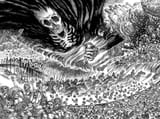Search Results
6/26/2025, 4:14:36 AM
I will just share some random physics of nukes.
When a subatomic particle is traveling in a material, it can only go so far before impacting an atom. This distance is called the "mean free path".
https://clive.semmens.org.uk/Energy/FreePath.html
The mean free path of a neutron in uranium is actually pretty big, a good portion of a meter if I recall.
Basically when the neutron impacts another uranium atom, it has the chance to split off more neutrons. Those neutrons themselves will travel and impact more atoms.
The production-rate of neutrons in the material is balanced by the rate that neutrons leave out the surface of the material. If statistically more neutrons leave, than are produced, then this will not go critical. However if the number of neutrons being produced inside is greater than than the rate they leave through the surface, then the neutrons build up more, and more, until the entire material goes fissile and detonates in a huge explosion.
The physical size of the mass has to be great enough to enable this to occur.
One of the simplest strategies is to take multiple sub-critical masses, arrange them away from each other, then force them together to form a critical mass. This mass will explode instantly. The rate at which the pieces can be forced together will determine the strength of the explosion, so they will actually use explosive charges to push them together as fast as possible.
The "gun type" weapon will take a different approach, and fire a stream of neutrons at a sub-critical mass, so that the rate of neutron generation rises above the rate of neutron expulsion, and it explodes. This one never quite made sense to me, but apparently it works.
A much more powerful explosion can be generated through a hydrogen fusion reaction. But achieving the initial-temperature for that explosion is only achievable through a nuclear bomb. That's why fusion bombs will ignite the fusion mass, with a fission mass.
When a subatomic particle is traveling in a material, it can only go so far before impacting an atom. This distance is called the "mean free path".
https://clive.semmens.org.uk/Energy/FreePath.html
The mean free path of a neutron in uranium is actually pretty big, a good portion of a meter if I recall.
Basically when the neutron impacts another uranium atom, it has the chance to split off more neutrons. Those neutrons themselves will travel and impact more atoms.
The production-rate of neutrons in the material is balanced by the rate that neutrons leave out the surface of the material. If statistically more neutrons leave, than are produced, then this will not go critical. However if the number of neutrons being produced inside is greater than than the rate they leave through the surface, then the neutrons build up more, and more, until the entire material goes fissile and detonates in a huge explosion.
The physical size of the mass has to be great enough to enable this to occur.
One of the simplest strategies is to take multiple sub-critical masses, arrange them away from each other, then force them together to form a critical mass. This mass will explode instantly. The rate at which the pieces can be forced together will determine the strength of the explosion, so they will actually use explosive charges to push them together as fast as possible.
The "gun type" weapon will take a different approach, and fire a stream of neutrons at a sub-critical mass, so that the rate of neutron generation rises above the rate of neutron expulsion, and it explodes. This one never quite made sense to me, but apparently it works.
A much more powerful explosion can be generated through a hydrogen fusion reaction. But achieving the initial-temperature for that explosion is only achievable through a nuclear bomb. That's why fusion bombs will ignite the fusion mass, with a fission mass.
Page 1
